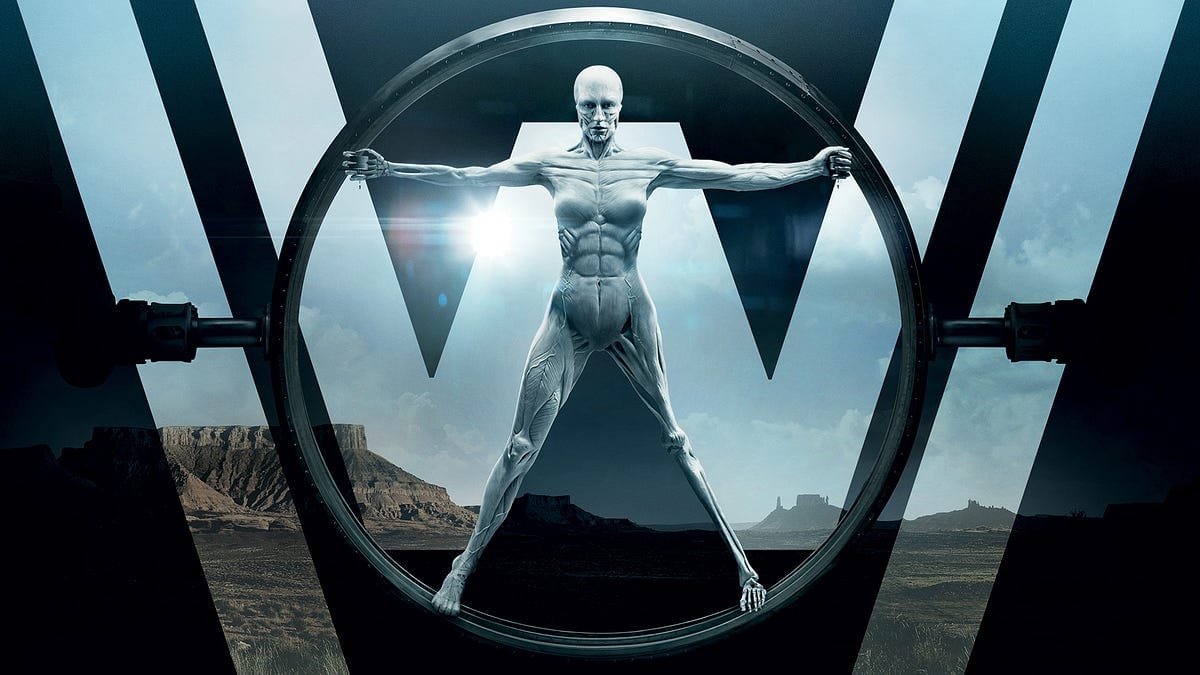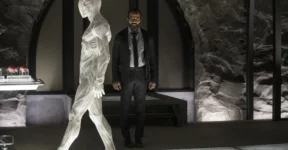At a glance, HBO’s Westworld appears like a run-of-the-mill exploration into the sci-fi theme where artificial intelligence is trying to take over the world. In fact, it might actually be the entire point if the series ends up following the overarching idea of the original 1973 film. Somewhere in Westworld Season 2, the AI revolution does take place as the humanoid robots – or “hosts” as they are officially called – in the theme park become self-aware and take a stand against humans. In the article, we will take a deeper look at the role of simulation technology in Westworld Season 2.

AI Revolution
But the series is not entirely faithful to the source material. One of the biggest changes in the narrative is that the series portrays the hosts as the protagonists. Westworld focuses heavily on the origin of the hosts, as they’re confined by a predetermined set of daily cycles according to their specific roles in the theme park. Hosts are 3D printed to be as realistic as possible with skin, flesh, and a complete circulatory system to resemble humans. Each host is programmed with a certain narrative or memory to make them follow a storyline with little to no deviation.
They’re nothing more than attractions for visitors, who subject the robots to many heinous behaviors involving sexual abuse, torture, and murder. Robots are not humans, and so paying-customers are given free rein to do as they like without “real-world” consequences. The set also helps establish the narrative in viewers’ mind; Westworld theme park is designed to resemble the American frontier during the 1800s, often portrayed in popular media as a period of lawlessness. At least during the first two seasons of Westworld, the plot asks the audience to sympathize with the hosts, not the visitors. As season two concludes, the robots basically win the battle. But of course, that will not be the end of the story.
Simulation At Its Best
One thing remains unchanged: both the film and the series revolve around the idea of simulation technology, which leads to a bigger exploration into ethics and exploitation of the presumably non-living entities. There are also questions about morality and the true nature of free will. The series brings forward the questions regarding what it means to be human and how experiences play a factor in somebody’s behavioral tendencies.
A simulation is, by definition, not a reality. That being said, it’s made to appear lifelike to blur the line between truth and imagination. As such, Westworld theme park is an imaginary world that merely depicts the Old West. What makes things different is that the simulation technology here has reached a peak point of sophistication that visitors won’t be able to tell the synthetic from the organic. It doesn’t really matter if the gamblers in the saloon are real or not – they can play poker. When human visitors lose their bets, it doesn’t mean the simulation cannot entertain them. Quite the contrary, the simulation works to their full potential; if they’re upset or angry, it only means that their illusion of reality is properly consummated.
Keep It Unreal
Things go horribly wrong in the theme park not because of failure in the simulation, but when the program transforms into what it aspires to be: reality. Visitors want to enjoy their freedom in the imaginary world and have it as authentic as possible, but still in a controlled fashion. They need Westworld to be a playground, a place where everyone can materialize their wildest obsessions and fantasies. And like a properly managed playground, all potential dangers in the park can be easily neutralized. When authenticity turns into a fulfilled promise, the simulation suddenly turns into a real-life threat that affects the hosts and visitors alike.
Take the story of William as an example. As a young man, William willfully plays into the idea that Westworld theme park lets him roam free like it’s nobody’s business. It doesn’t take long until he ends up falling in love with a host named Dolores only to figure out that the experience is fake. To make matters worse, Dolores’ memory can be easily modified by the park management. She can easily forget William and express the same gestures of love to just about any other visitor or host.
Disenchanted with Dolores and his own feelings, William turns into a bittern man – a massive change that takes a real-life toll on the relationships with his real-life family. He practically never leaves the park and exerts his cruel fantasies to Dolores; he rapes and kills Dolores repeatedly out of anger.
Such a simulated reality has reciprocal effects. One of the most consequential turning points in Westworld is when Dolores fulfills William’s deep-buried hope that the simulation is reality. Part of what triggers self-awareness in Dolores is a memory leak glitch that allows her to remember her ordeal in the hands of humans. When Dolores transforms into a sentient individual, it’s only natural if she hates humans.
We think there are more than enough twists and turns in Westworld Season 2 that it might be hard to remember all that happened throughout all the episodes and when they did happen. But at the end, it all eventually comes down to an overwhelming (albeit already extensively explored) idea about the threat of AI that emerges from a broken simulated technology into the real world.
Have we reached a point where AI becomes an actual threat to humanity? What is the closest thing to a realistic humanoid robot today? We’d love to hear from you.
Other Things You Might Want to Know
Some of the best films about AI:
● AI: Artificial Intelligence (2001)
● Brian and Charles (2022)
● The Matrix (1999)
● Short Circuit (1986)
● Blade Runner (1982)
● Ex Machina (2014)
● Her (2013)
● The Mitchells vs the Machines (2021)
● 2001: A Space Odyssey (1968)
● Terminator 2: Judgment Day (1991)
Popular TV series about AI:
● Severance (2022 –)
● Electric Dreams (2017 – 2018)
● Black Mirror (2011 –)
● Automan (1983 – 1984)
● Solos (2021)
● Knight Rider (1982 – 1986)
● Person of Interest (2011 – 2016)
● Humans (2015 – 2018)
● Altered Carbon (2018 – 2020)
● Made for Love (2021 – 2022)
What are Isaac Asimov’s Three Laws of Robotics?
- A robot must not injure a human being or allow a human being to come to harm through inaction.
- A robot must always obey orders given to it by human beings, except where the orders conflict with the First Law.
- A robot must protect its existence as long it does not conflict with the First or Second Law.
Check out other articles by month:







